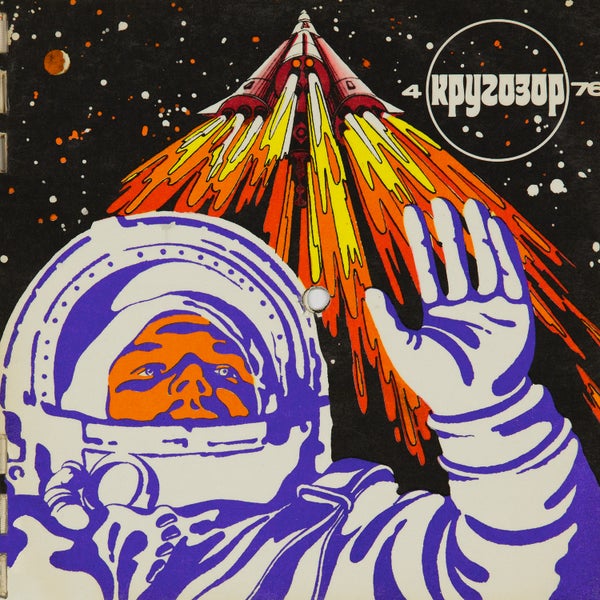The future isn’t what it used to be. A mere half-century ago, it was entirely possible to envision a world—a universe—in which the Soviet Union, not the U.S., would win the cold war–fueled space race and become the dominant nation on Earth and beyond. Spin-off technologies from space exploration would spectacularly enrich socialist economies, a Soviet lunar base would ensure a “Red moon” loomed over our planet, and cosmonauts would create outposts or colonies on Mars. And whenever humankind made the giant leap to the stars, our first emissaries would take the tenets of communism with them to share with any cosmic civilizations we found.
Instead, of course, the U.S. triumphed in both the space race and cold war. The rest, as the saying goes, is history. But the legacy of those techno-socialist utopian dreams still endures—especially in the art and design produced in the Soviet Union during the turbulent, transformative mid-20th century. A new retrospective compendium, Soviet Space Graphics(Phaidon, 2020; $39.95), showcases some of the best work from this bygone era.
Here we present a selection of images from the book. With their heady mix of quasi-religious iconography and science-as-salvation propaganda, these pictures offer a glorious romp through retro-futurism—and a hopeful vision of the endless possibilities for the human spirit in the depths of space.
On supporting science journalism
If you're enjoying this article, consider supporting our award-winning journalism by subscribing. By purchasing a subscription you are helping to ensure the future of impactful stories about the discoveries and ideas shaping our world today.
